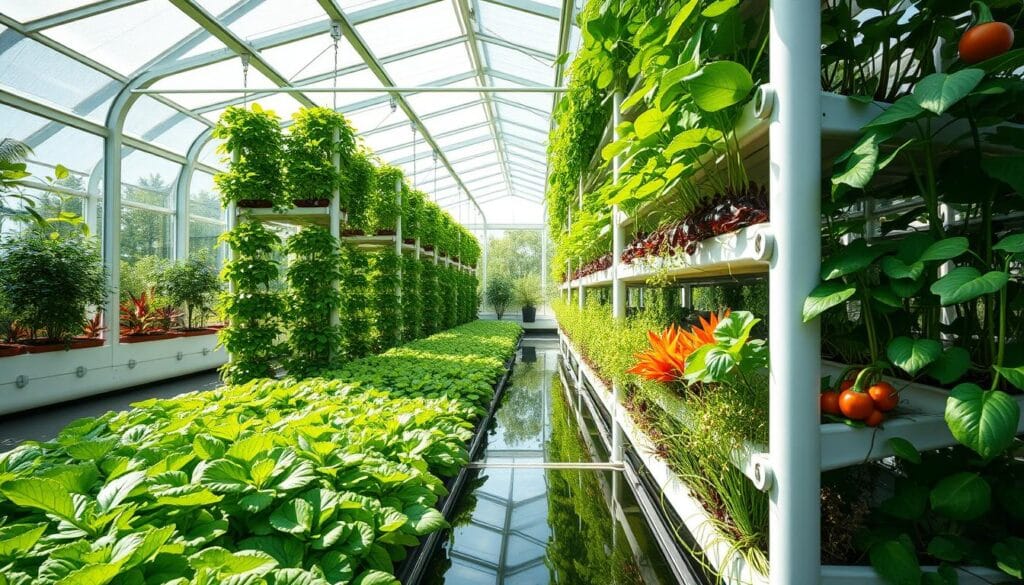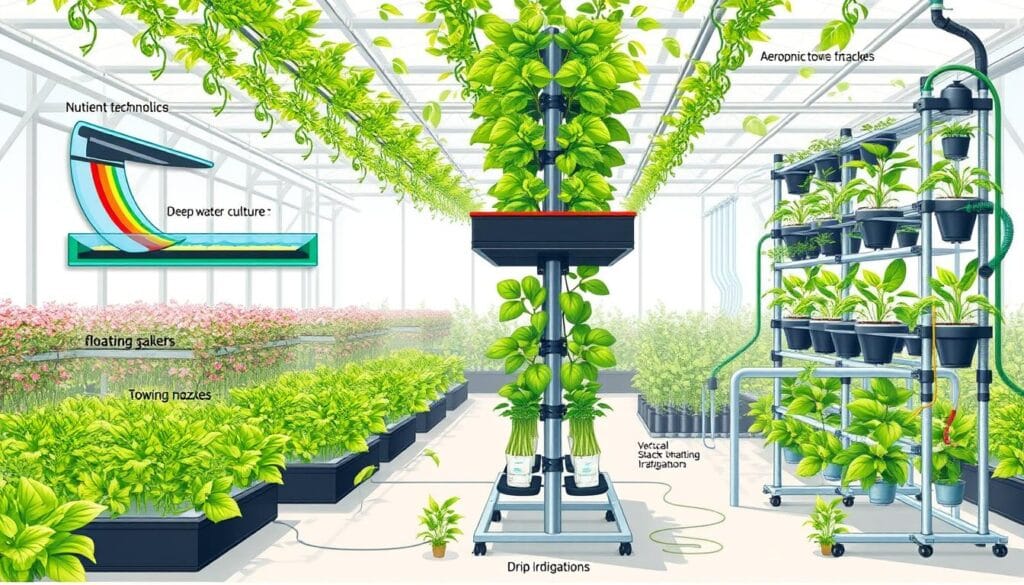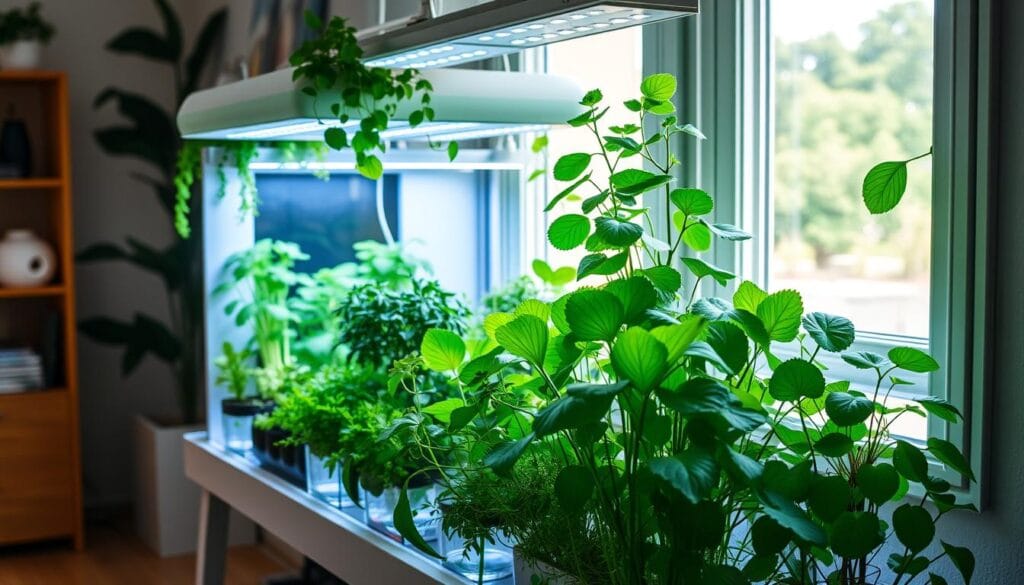LuxioHome
Welcome to Luxiohome — where your dream space becomes reality.
LuxioHome
Welcome to Luxiohome — where your dream space becomes reality.

Explore Hydroponic Gardening for efficient, soilless plant growing indoors. Learn how to create lush gardens without traditional soil beds.

Hydroponic gardening is a new way to grow food without soil. It uses water full of nutrients to help plants grow. This method is great for growing plants indoors, even in small spaces.
As cities get more crowded, hydroponics lets people grow their own food. It’s perfect for both experts and beginners. It’s also good for the planet, making it a top choice for growing food.
Hydroponic gardening is a new way to grow plants without soil. It uses a water solution full of nutrients to help plants grow. This method lets farmers control the growing conditions for different crops.
Hydroponic gardening means growing plants in water, not soil. It helps plants grow faster and healthier. Growers can adjust things like nutrient levels and temperature to help plants thrive.
Hydroponic gardening started long ago, in ancient Egypt and Babylon. In the 20th century, it became more popular. People like Dr. William Frederick Gericke helped make it a big deal in farming.

Hydroponic gardening offers many benefits that make it popular. It allows for higher yields and faster growth. This is because nutrients are delivered directly to the roots, helping plants grow better.
Plants in hydroponic systems do well because of the perfect conditions. This means they are not just healthier but also more productive. Growers can harvest crops much faster than with traditional gardens.
Hydroponic gardening is also very water-efficient. It can use up to 90% less water than regular farming. This is great for areas where water is scarce. The system also reduces waste, making it sustainable.
Hydroponic gardening also has fewer pest and disease issues. Without soil, pests and diseases have less chance to spread. This means plants stay healthier and need fewer chemicals. It’s a cleaner and more natural way to grow plants.

There are many hydroponic systems out there. Each one uses different ways to give plants water and nutrients. Knowing about these systems helps you choose the right one for your garden.
The Nutrient Film Technique uses a thin film of nutrients that flows over plant roots. It gives plants the nutrients they need and keeps the roots oxygenated. This makes plants healthier and more productive.
Deep Water Culture suspends roots in a nutrient-rich water. Air stones keep the roots from rotting by adding oxygen. It’s a simple and effective system that’s great for home growers.
Wick systems use a wick to pull nutrients from a reservoir to the roots. It’s easy to use and perfect for beginners. Ebb & flow systems flood the roots with nutrients and then drain it back. This cycle gives plants the nutrients and oxygen they need.

Starting a home hydroponic garden is a fun journey. It brings fresh produce and greenery into your home. It’s important to pick the right spot. Look for a place with lots of natural light, near a power source, and the right temperature.
When picking a spot for your hydroponic garden, think about these things:
You’ll need some key items for your hydroponic garden:
Many plants do well in hydroponic gardens. Some top picks are:

Setting up your indoor hydroponic garden needs a controlled environment. You must manage lighting, temperature, and humidity to help plants grow all year. The right setup boosts growth and health.
Good lighting is key for a healthy indoor garden. You can choose from old-school fluorescent lights to new LED grow lights. These lights give plants the right spectrum for photosynthesis, making them grow strong and produce well.
Temperature and humidity are also crucial. Keeping an eye on these helps prevent stress in plants. Tools like humidifiers or dehumidifiers help control humidity levels. This keeps plants in their best environment, leading to strong, healthy plants all year.